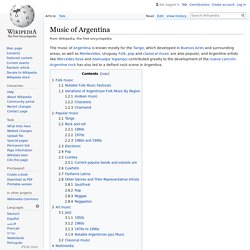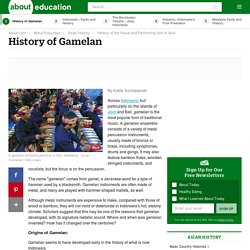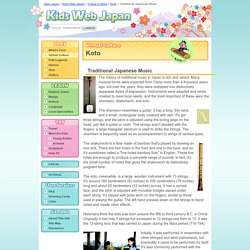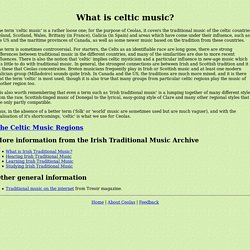

Dance and Music in Argentina. Music and Dance in Argentina is an integral part of traditional and contemporary life, which unites communities and functions as an important social tool for both national and regional identification.

Music of Argentina - Wikipedia. The music of Argentina is known mostly for the Tango, which developed in Buenos Aires and surrounding areas, as well as Montevideo, Uruguay.

Folk, pop and classical music are also popular, and Argentine artists like Mercedes Sosa and Atahualpa Yupanqui contributed greatly to the development of the nueva canción. Argentine rock has also led to a defiant rock scene in Argentina. Folk music[edit] Los Chalchaleros quartet, 1958 The Ábalos brothers, 1945 Ariel Ramírez (at piano), President of the Argentine Society of Authors and Composers, with eminent folklore vocalist Mercedes Sosa, 1972 Folk music—called música folklórica or folklore in Spanish, from the English folklore—comes in many forms, developed in different parts of Argentina with different European and indigenous influences.
Giora Feidman - Wikipedia. Giora Feidman (Hebrew: גיורא פיידמן; born 26 March 1936) is an Argentine-born Israeli clarinetist who specializes in klezmer music.

Biography[edit] Giora Feidman was born in Buenos Aires, Argentina, where his Bessarabian Jewish parents immigrated to escape persecution. Feidman comes from a family of klezmer musicians. Giora Feidman: The Klezmer's Freilach. Klezmer music. Historical Background of Indonesian Music by Ridzkhan Sahak on Prezi. Indonesian Music and Dance. By Kallie Szczepanski Across Indonesia, but particularly on the islands of Java and Bali, gamelan is the most popular form of traditional music.

A gamelan ensemble consists of a variety of metal percussion instruments, usually made of bronze or brass, including xylophones, drums and gongs. It may also feature bamboo flutes, wooden stringed instruments, and vocalists, but the focus is on the percussion. The name "gamelan" comes from gamel, a Javanese word for a type of hammer used by a blacksmith. Gamelan instruments are often made of metal, and many are played with hammer-shaped mallets, as well. Although metal instruments are expensive to make, compared with those of wood or bamboo, they will not mold or deteriorate in Indonesia's hot, steamy climate. Origins of Gamelan: Gamelan seems to have developed early in the history of what is now Indonesia. continue reading below our video Unfortunately, however, we have very few good sources of information from the early period.
Sources: Sumarsam. Traditional Japanese Music - Koto - Virtual Culture. The history of traditional music in Japan is rich and varied.

Many musical forms were imported from China more than a thousand years ago, but over the years, they were reshaped into distinctively Japanese styles of expression. Instruments were adapted and newly created to meet local needs, and the most important of these were the shamisen, shakuhachi, and koto. The shamisen resembles a guitar; it has a long, thin neck and a small, rectangular body covered with skin. It's got three strings, and the pitch is adjusted using the tuning pegs on the head, just like a guitar or violin.
The strings aren't plucked with the fingers; a large triangular plectrum is used to strike the strings. The shakuhachi is a flute made of bamboo that's played by blowing on one end. Japanese music. Biography & History. Some of the most exciting sounds to come out of Africa in the late '80s and 1990s were produced by Senegal-born vocalist Youssou N'Dour.

Although rooted in the traditional music of his homeland, N'Dour consistently sought new means of expression. In addition to recording as a soloist, N'Dour collaborated with a lengthy list of influential artists including Paul Simon, Peter Gabriel, Neneh Cherry, and Branford Marsalis. A native of the impoverished Media section of Dakar, N'Dour inherited his musical skills from his mother, a griot (oral historian) who taught him to sing as a child. A seasoned performer before his teens, N'Dour joined the popular group the Star Band de Dakar at the age of 19. Within two years, he had assumed leadership of the group, which he renamed Super E'toile de Dakar. N'Dour's talents soon attracted the support of top-rated musicians.
African music. Celtic Music Instruments. What is celtic music? The term 'celtic music' is a rather loose one; for the purpose of Ceolas, it covers the traditional music of the celtic countries - Ireland, Scotland, Wales, Brittany (in France), Galicia (in Spain) and areas which have come under their influence, such as the US and the maritime provinces of Canada, as well as some newer music based on the tradition from these countries.

The term is sometimes controversial. For starters, the Celts as an identifiable race are long gone, there are strong differences between traditional music in the different countries, and many of the similarities are due to more recent influences. There is also the notion that 'celtic' implies celtic mysticism and a particular influence in new-age music which has little to do with traditional music. In general, the strongest connections are between Irish and Scottish tradition and it is on these that Ceolas concentrates. El terrible caso de Kate Logan.
What Instruments Are Played in Klezmer Music? Budapest klezmer band I. Javanese gamelan: music and dance. Yoshida Brothers. The Irish Rovers, Whiskey in the Jar. African Music. Traditional Rhythm Band from Botswana Part 1.